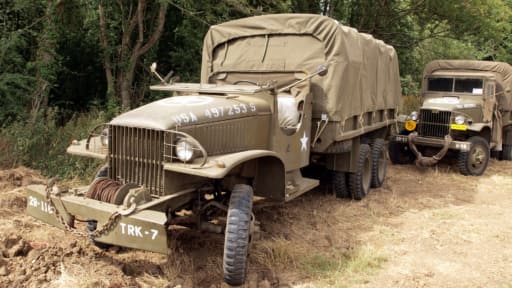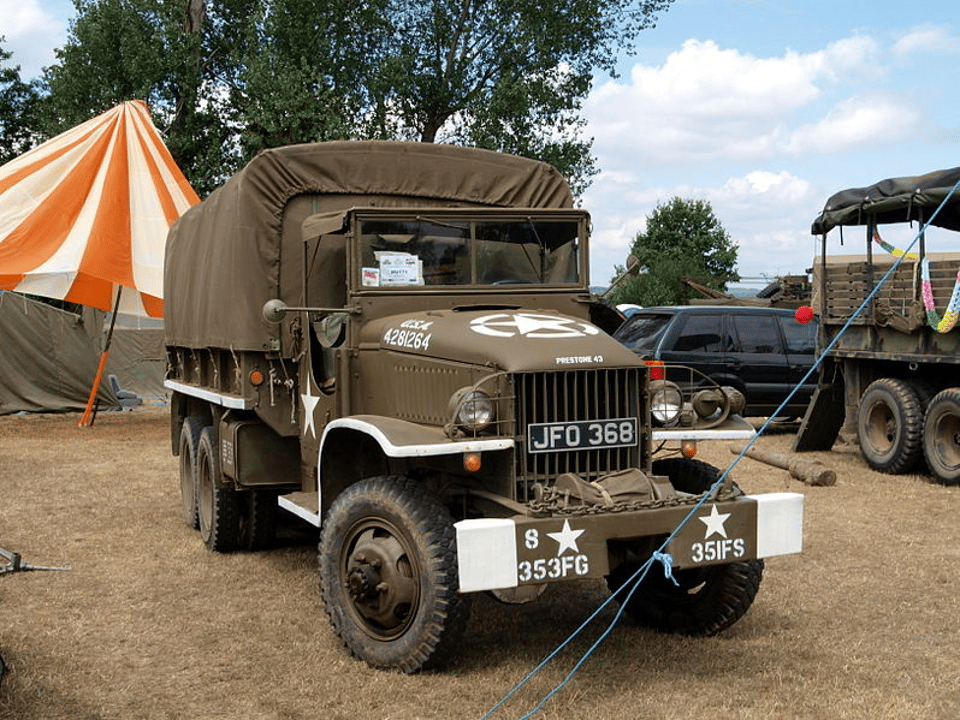The Truck that “Won”World War II

On June 6, 2024, we celebrated the 80th anniversary of D-Day: the landing of the Western Allies on the beaches of Normandy and the opening of the second front in Europe, marking a milestone on the path to ending World War II. On this occasion, it’s worth taking a closer look at a silent heroine of those days, without which the Allied supply lines could not have functioned efficiently—the “Deuce and a Half,”the truck that “won”World War II.
In the literature about the largest armed conflict in human history, many studies and articles focus on specific inventions and technologies credited with the Allies’and the USSR’s victory over Nazi Germany and Imperial Japan in 1945. We hear about the winning tank (T-34), the winning plane (Spitfire), the winning technology (nuclear bomb and jet engine), etc. Of course, winning a war is never ensured by a single miracle weapon. Victory primarily depends on the courage and dedication of soldiers, the common sense and experience of commanders, and logistics. Maybe, above all, logistics. Even the bravest soldier, equipped with the best weapons and commanded by a strategic genius, won’t win if he has nothing to eat and no fuel for his vehicle or combat plane. That’s why the saying “logistics is not everything, but without logistics everything is nothing”becomes so significant during wartime. The Allies learned this during the Normandy landings.
Operation Red Ball Express
Before D-Day, RAF and USAAF aircraft launched massive bombings of railways and bridges in France to cripple Wehrmacht supply lines. Effective, but it turned out to be a double-edged sword. After the successful invasion, Anglo-American forces and their allies also couldn’t use the destroyed infrastructure. By the end of August 1944, the 28 Allied divisions rapidly advancing into France needed as much as 20,000 tons of supplies a day (food, ammunition, fuel) — stretched supply lines threatened to halt the offensive due to lack of supplies. So, the decision was made to deliver materials from the rear to the front using truck convoys. Nearly 6,000 vehicles were used, traveling on two routes between the base in Chartres and the port of Cherbourg. On the northern route, trucks escorted by jeeps (in groups of five to reduce the risk of air attack from the Luftwaffe) delivered supplies, and on the southern route, they returned to the loading point. Both roads were closed to civilian traffic, and convoys moved on them continuously in both directions.
This large logistic operation of World War II ended in mid-November 1944, when the Allies captured the port of Antwerp, Belgium. Commanded by Col. Loren Ayers, the operation was known as “Red Ball Express,”named after the term for priority cargo used by American railways. It would not have succeeded without the sacrifice of the truck drivers, who were particularly sleep-deprived. Without them, the Allied troops would have fought longer, and the war would have lasted longer. Seventy-five percent of these drivers were African-American, and for years their key participation was scandalously downplayed due to racism in the army (only recently have they been properly commemorated). Besides the brave drivers, the heroines of the “Red Ball Express”operation were the trucks they drove, especially one model: the “Deuce and a Half,”also called Jimmy.
“Deuce and a Half”, Jimmy, GMC CCKW, G-508 –Many Names for the Truck that “Won”World War II
The GMC CCKW 2 1/2-ton 6×6 truck (with a load capacity of 2.5 tons and drive on all six wheels) is the official name of the truck that constituted the majority of the fleet used during Operation Red Ball Express. Between 1941-1945, over 570,000 of these trucks were produced (only more Jeeps left the factories). They made up 70% of 2.5-ton trucks used by the US Army and nearly ¼ of all trucks produced during the war (of all capacities). Next to the Jeep, the GMC CCKW was the core of the Allied road logistics fleet during the war. Interestingly, the Studebaker US6 truck, an equally famous icon of World War II motoring, visually similar to the “Deuce and a Half”, was entirely different in design. Most Studebakers went to allied armies, especially the USSR under the Lend-Lease Act.
But back to “The Deuce”. The truck was developed by General Motors designers based on US Army guidelines. Initially produced by the Yellow Coach plant, partly dependent on GM, Jimmy—informally called by soldiers—began to be produced under the GMC brand after GM fully acquired Yellow Coach.
The acronym CCKW stands for C –in service from 1941, C –conventional cabin behind the engine, K –all-wheel drive, and W –double rear axle. According to the US Army, the “Deuce and a Half”is G-508.
There were over 20 versions of the GMC CCKW. The most popular were CCKW-353 (closed or open cabin with long wheelbase) and CCKW-352 (with a shorter wheelbase). Specialized versions included the DUKW amphibious model (called unofficially as the Duck), a tanker, a mobile radio station, and even an M45 Quadmount anti-aircraft gun carrier.

GMC CCKW-353 Truck, 2.5-ton, 6×6, Cargo w-Winch, USA 4281264 (Author: Alf van Beem, CC0 1.0 Universal Public Domain Dedication, Wikipedia)
A variant with a cab over the engine was also developed (AFKWX-353), structurally identical to the standard model and powered by the same inline six (OHV) with a capacity of 270 cubic inches (4.4 l) and power of 91 or 104 HP. The cabin above the engine allowed for more cargo space. Only a little over 7,200 of this model were produced because servicing it in front-line conditions proved too troublesome.
Production of the “Deuce and a Half”ended in 1945, and four years later, the M35 developed by REO Motors appeared. Despite this, the GMC Jimmy remained in service until the mid-1960s when REO’s new model completely replaced it.
If logistics largely wins wars, there’s no doubt that the GMC CCKW truck (and its companions like the Studebaker US6 and International M-5H-6) significantly contributed to the Allied victory in World War II by transporting soldiers, fuel, food, and ammunition on all fronts. The participation of thousands of “Deuce and a Half”trucks in Operation Red Ball Express is the most outstanding proof of this.
Thumbnail photo: GMC CCKW-353 Truck, 2.5-ton, 6×6, Cargo w-Winch, USA 497253 S, Wikipedia